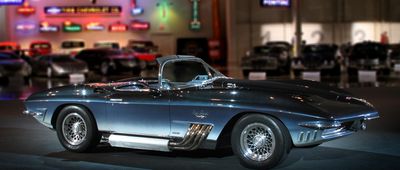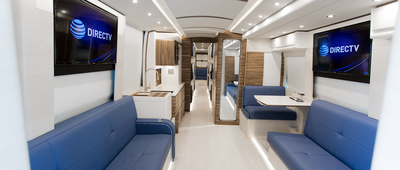Best of the ’50s
The 1950s welcomed a slew of car models, contributing to a postwar boom of nearly 60 million vehicles. The decade’s drivers got lots of chrome, flashy taillights, wraparound windshields, and those beloved sharp tail fins, with the design of many makes mimicking rocket ships. Automakers such as Ford, Chevy, Cadillac, and Buick all introduced tons of iconic rides during the decade, and we chose some of the best to talk about below.




























